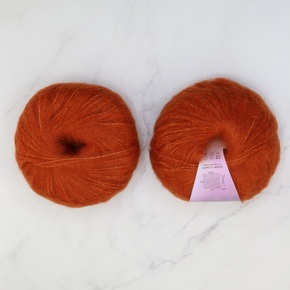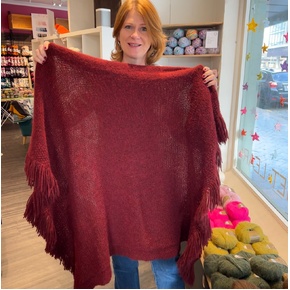
Alpaca Yarns Baby Brushed Alpaca 14ply
From $18.45

From $31.95

Baby Brushed Alpaca Throw yarn kit
From $184.50

Cumulus Blouse O-neck Kit in Whisper
From $159.75

Indiecita Baby Suri Silk Brushed
From $16.10
Alpaca Yarns NZ sources the best fibre from a supplier in Peru, who has set up breeding ranches in the Andean highlands with the aim of improving stock through sustainable breeding practices. Its aim is to educate and support the small farmers who own most of the animals throughout the region, working harmoniously with nature and the environment.
There is a growing demand for alpaca fibre in textile and fashion centres throughout the world. With a drastically limited supply of these animals outside South America and stringent export restrictions on further transport of Peruvian animals in order to avoid depletion of their herds, consumers want more fleece than farmers can produce.
Alpaca Yarns NZ is passionate about alpacas and alpaca yarn and also believe it’s important to keep this industry thriving in Peru in a sustainable way.
The beauty of alpaca
Alpaca fibre is hollow, making it deliciously warm and light. It has no lanolin so is hypoallergenic, plus it is naturally water repellent. There are two types of alpaca: Huacaya - the most common alpaca fibre - is a soft spongy fibre with a natural crimp and elasticity, making it perfect for knitting and crochet; Suri alpaca has no crimp and is therefore best blended with other fibres.
The llama is the biggest and heaviest of the South American camelids, and almost 65 per cent of all llamas live in the Bolivian highlands. It has been domesticated and used in transport since pre-Incan times and, even today, the llama forms part of many of the diverse customs and religious rituals of the Andean peoples. The hair of the llama is typically coarser and rougher than that of the alpaca, but can be just as soft, particularyly baby llama fibre. Llama yarn has high thermal capacity, lightness and high wear durability making it a very desirable yarn.

Alpaca Yarns Baby Brushed Alpaca 14ply
From $18.45

From $31.95

Baby Brushed Alpaca Throw yarn kit
From $184.50

Cumulus Blouse O-neck Kit in Whisper
From $159.75

Indiecita Baby Suri Silk Brushed
From $16.10